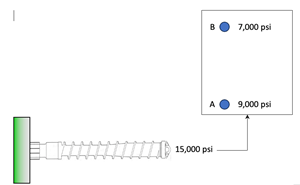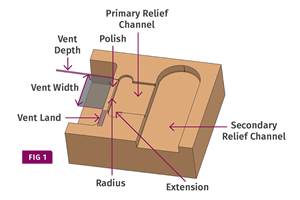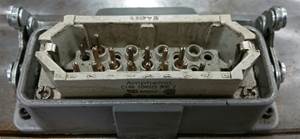MES Helps Molder Tackle Plant Efficiency
New central computer system dramatically improved operating efficiencies and slashed costs for a molder of tackle boxes and other types of cases.
There’s an 80% shot that if you’re a fisherman and own a tackle box, it was made by Plano Molding. Running 41 production lines at plants in Mendota and Sandwich, Ill., for more than 60 years, the company has been making fishing-tackle boxes, tool boxes, and carrying cases for a number of outdoor activities, and selling its products under the Plano, Frabill, Tenzing, Caboodles, and Creative Options brand names.
A few years ago, a plan to replace the traditional paper-and-pencil approach to collecting performance data on the shop floor led to consider a new manufacturing execution system (MES) to automate and optimize production processes and performance. The molder opted for a Mattec MES from , Austin, Tex., and the end results have been dramatic improvements in efficiencies and a huge savings as a result of cutting scrap. The system offers Plano capabilities for production scheduling, monitoring machine operation and maintenance, quality management, and real-time analysis of machine-related data such as overall equipment effectiveness (OEE), run rates, scrap, yield, and more.
Mattec MES captures data directly from machines and operators, and delivers real-time production metrics and operations analytics in an easy-to-digest, visual manner.
With MES, Plano can look at critical efficiency measurements, such as OEE and scrap rates—by shift, day, week, or month. Real-time production and process monitoring helps Plano eliminate inefficiencies, like reducing scrap and unplanned downtime while also improving cycle efficiencies, so the molder can work more profitably.
“Mattec played a significant role in achieving over $700,000 worth of scrap savings year-to-date, year-over-year,” says Tom Dimick, dir. of manufacturing operations at Plano. Concerning scrap, it was important for Plano to establish “molded costs” (vs. fixed costs) so it could evaluate scrap cost savings separately for high-value and low-value products. Notes Dimick, “We manufacturer a variety of products that are made up of parts which vary in value. We’ve been able to take the focus off looking at the percentage of scrap improvements and more towards evaluating the part’s dollar value. Mattec allows us to track this information.”
By looking at scrap charts, Plano can spot which machines are having issues with the molds, while scrap tables show which part number has the highest scrap cost. “This information allows our team to focus on the highest-value areas and products that we need to get under control,” notes Dimick. Focusing on an overall percentage doesn’t mean the highest dollar value.”
Machine availability and uptime have improved drastically as well. “Mattec allows us to dive into which machines and molds are having problems, giving us real-time feedback on what’s happening in our plants,” adds Dimick.
With the Mattec MES, Plano has become more proactive in anticipating and solving production problems before they occur. Examples of this are the real-time displays of the Top Five OEE Machines, Bottom Five OEE Machines, Top Five Cycle-Efficient Machines, Top Five Scrap Reasons, and more that are visible on the plant floors. This information has a huge impact on scheduling and allows Plano to quickly determine which machines can run a particular job; which machine is most efficient for the job; and, with real-time tracking, the reasons for job delays. “Our team uses the Mattec system more than any other system we have in the company,” says Dimick. “The shop-floor insights that Mattec provides helps our team drive bottom-line growth.”
Better planning and scheduling have also enabled Plano to improve its responsiveness to customers and customer satisfaction. “Real-time planning and scheduling insights with Mattec allow us to respond to our customers faster,” adds Dimick. “This is especially critical for rush orders, so when the scheduling department gets an urgent order they can instantly communicate with plant-floor managers and receive optimal plans based on machine efficiencies, production-line availability, materials forecasting, and other critical factors to schedule the job.”
Related Content
Understanding the Effect of Pressure Losses on Injection Molded Parts
The compressibility of plastics as a class of materials means the pressure punched into the machine control and the pressure the melt experiences at the end of fill within the mold will be very different. What does this difference mean for process consistency and part quality?
Read MoreBack to Basics on Mold Venting (Part 2: Shape, Dimensions, Details)
Here’s how to get the most out of your stationary mold vents.
Read MoreInjection Molding: Focus on these Seven Areas to Set a Preventive Maintenance Schedule
Performing fundamental maintenance inspections frequently assures press longevity and process stability. Here’s a checklist to help you stay on top of seven key systems.
Read MoreHot Runners: How to Maintain Heaters, Thermocouples, and Controls
I conclude this three-part examination of real-world problems and solutions involving hot runners by focusing on heaters, thermocouples, and controls. Part 3 of 3.
Read MoreRead Next
See Recyclers Close the Loop on Trade Show Production Scrap at NPE2024
A collaboration between show organizer PLASTICS, recycler CPR and size reduction experts WEIMA and Conair recovered and recycled all production scrap at NPE2024.
Read MoreFor PLASTICS' CEO Seaholm, NPE to Shine Light on Sustainability Successes
With advocacy, communication and sustainability as three main pillars, Seaholm leads a trade association to NPE that ‘is more active today than we have ever been.’
Read MorePeople 4.0 – How to Get Buy-In from Your Staff for Industry 4.0 Systems
Implementing a production monitoring system as the foundation of a ‘smart factory’ is about integrating people with new technology as much as it is about integrating machines and computers. Here are tips from a company that has gone through the process.
Read More













